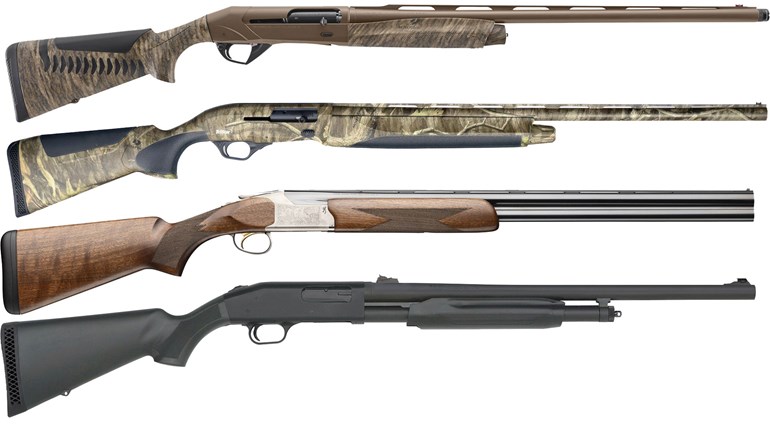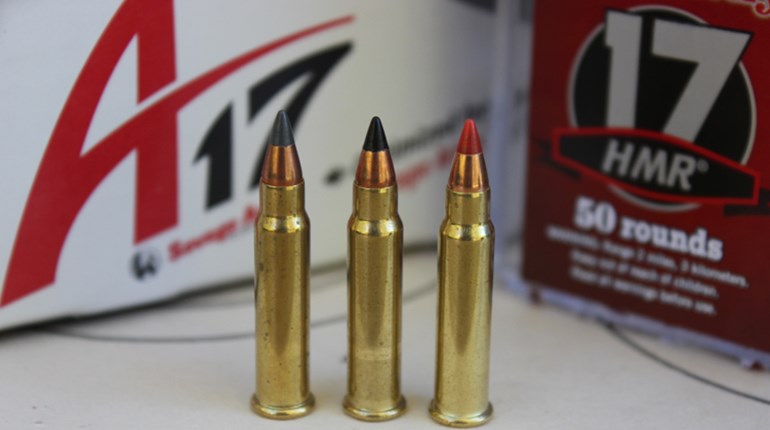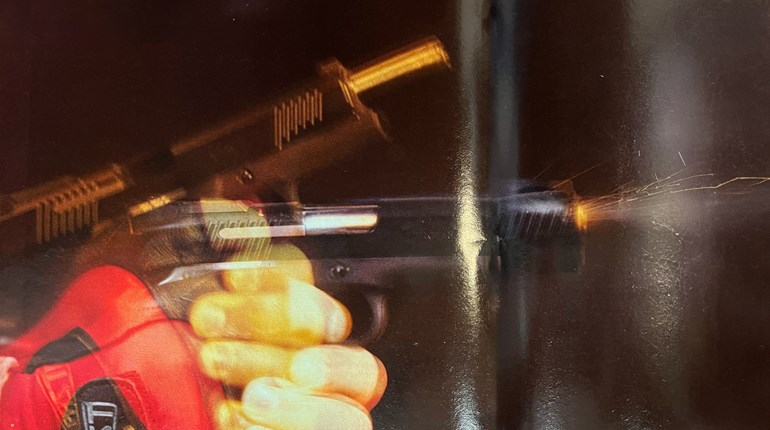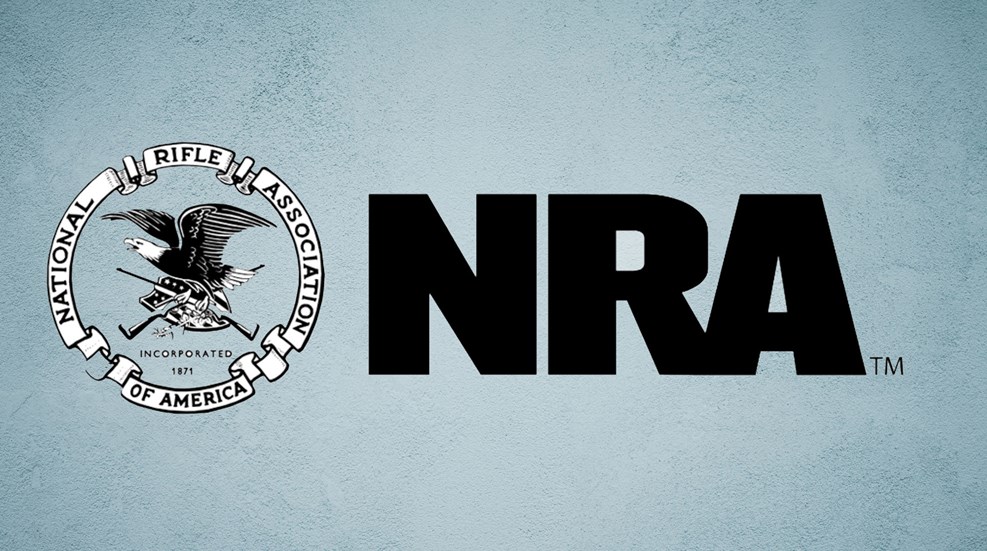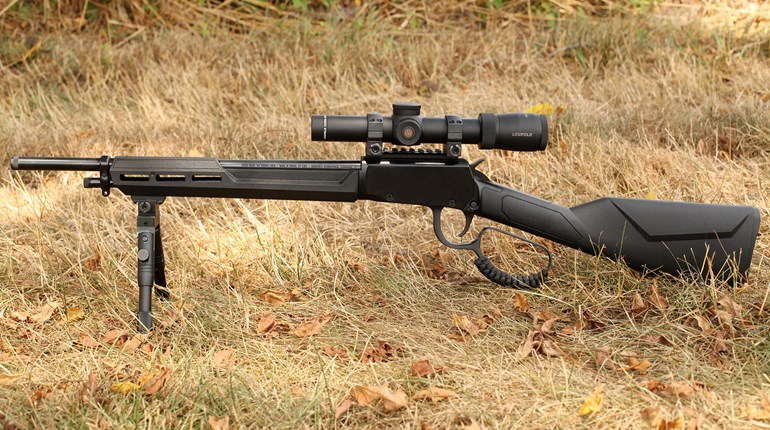
Recoil can rob accuracy and make shooting less enjoyable, but you can learn to control it and shoot better—even with hard-kicking firearms.
A few years ago, I attended Monty Kalogeras’s Safari Shooting School in Texas and while I was there I had an opportunity to shoot Monty’s Heym double rifle in .500 Nitro Express. Driving a 570-grain bullet from the barrel at 2,150 fps, the .500 Nitro delivers almost three tons of muzzle energy, making it one of the most powerful shoulder-fired rifles in existence. And, as you might imagine, it produces a lot of recoil—about four times the recoil produced by an 8-pound rifle chambered in .308 Winchester. Needless to say, it’s not a rifle for beginners. That level of setback is pretty overwhelming even for seasoned shooters, but Monty—who weighs about 140 pounds—shoots that rifle comfortably. How does he do it?
“It’s all about managing recoil,” he says.
Recoil is the rearward motion of a firearm, the equal and opposite reaction generated from the bullet and gases leaving the muzzle. Naturally, the more energy a gun generates the greater the recoil force, but gun weight and stock or grip design also play a role in recoil. And if you want to be a good shooter, you have to learn to manage recoil. If you don’t, you won’t enjoy shooting and there’s a good chance you’ll develop an accuracy-robbing flinch. Here are four tips that will help you become a better shooting by beating the kick.
1. Understand Actual Versus Perceived Recoil:
Stress Engineering in Cincinnati, Ohio has done extensive research on recoil in firearms. While the company was collecting reams of data regarding the actual, physical forces behind recoil they also discovered that recoil is more than just a measurable, physical force—what we refer to as actual recoil. There’s also a phenomenon known as “perceived recoil,” and that’s harder to measure because it involves a shooter’s perception of how recoil forces feel. People flinch during recoil because of our natural aversion to pain, and the same level of actual recoil can generate different levels of pain in various shooters for a variety of reasons. The first, rather esoteric reason is our mental perception of how much recoil hurts. A narrow, unforgiving recoil pad, an ill-fitting gun and improper stance can all increase our perceived recoil. In addition, the sound of a muzzle blast can cause a flinch almost as quickly as physical setback from the firearm. Without altering the firearm or load we can’t change actual recoil forces, but you can mitigate perceived recoil. Wearing ear protection and developing a proper stance and mindset are the two easiest ways to beat perceived recoil without altering the gun or load.
2. Stance and Grip:
The best way to manage recoil is to position your body so that you can absorb recoil forces efficiently with the least painful impact. The most common mistake I see with regards to body position (and this is particularly true of new shooters) is that they tend to shift their weight backward when they hold a gun, placing the majority of their weight on the heel instead of the ball of the foot. A more aggressive stance—one where the body is centered over the knees with a slight but not exaggerated forward lean—allows for better recoil management and more stability. When you mount a shotgun or rifle, lean forward slightly at the hips, and work on developing a good cheek weld (keeping the face in contact with the stock). The notion of placing your face on the stock may seem counterintuitive, but it prevents the gun from pivoting upward and striking the face which increases perceived recoil. Handgun shooters should also reduce muzzle rise and this pivoting effect by securing a high, two-handed grip on the pistol. 
Leaning back is a common error for beginners.
The proper way to manage handgun recoil is to lean slightly forward and a maintain a high grip on the gun. This also decreases muzzle rise and allows for faster follow-up shots.
3. Change Your Firearm and Load:
This could be as simple as switching to a different caliber gun that generates less recoil, or swapping out loads for something less powerful and more manageable. You can also make physical changes to the gun, too, like adding porting (which reduces felt recoil but increases muzzle blast) or mercury recoil reducers. Oftentimes something as simple as switching to a more comfortable recoil pad will make a major difference, and adding gun weight helps. Many new firearms including Savage’s 110 AccuFit have adjustable stock shims and inserts that help you customize the fit of the gun, and that can have a major impact on perceived recoil because a firearm that fits you properly allows for improved recoil management.
4. Stop Flinches Before They Start:
The best way to eliminate a flinching is to limit the time you spend firing hard-kicking firearms. As a collegiate shotgun shooter and a shooting sports coach, I could recognize when shooters hit “the wall” and started dropping targets simply because they were worn out. When I’m testing hard-kicking magnum rifles, I’ll oftentimes take along a .22 rimfire and, after the shooting session with the bigger rifle, I’ll wind down with the .22. Part of the reason I do that is to work on the fundamentals of proper shooting, like trigger control and sight picture...and that’s much easier to do when you’re shooting a gun with very mild recoil. It’s critically important for your success as a shooter to know when to stop. There are some shooters who promote “shooting through pain” to learn to master it, but accurate shooting is precise shooting. Precise shooting demands complete control and focus—two things you lose when you’re devoting too much mental energy to avoiding the next punishing kick.












